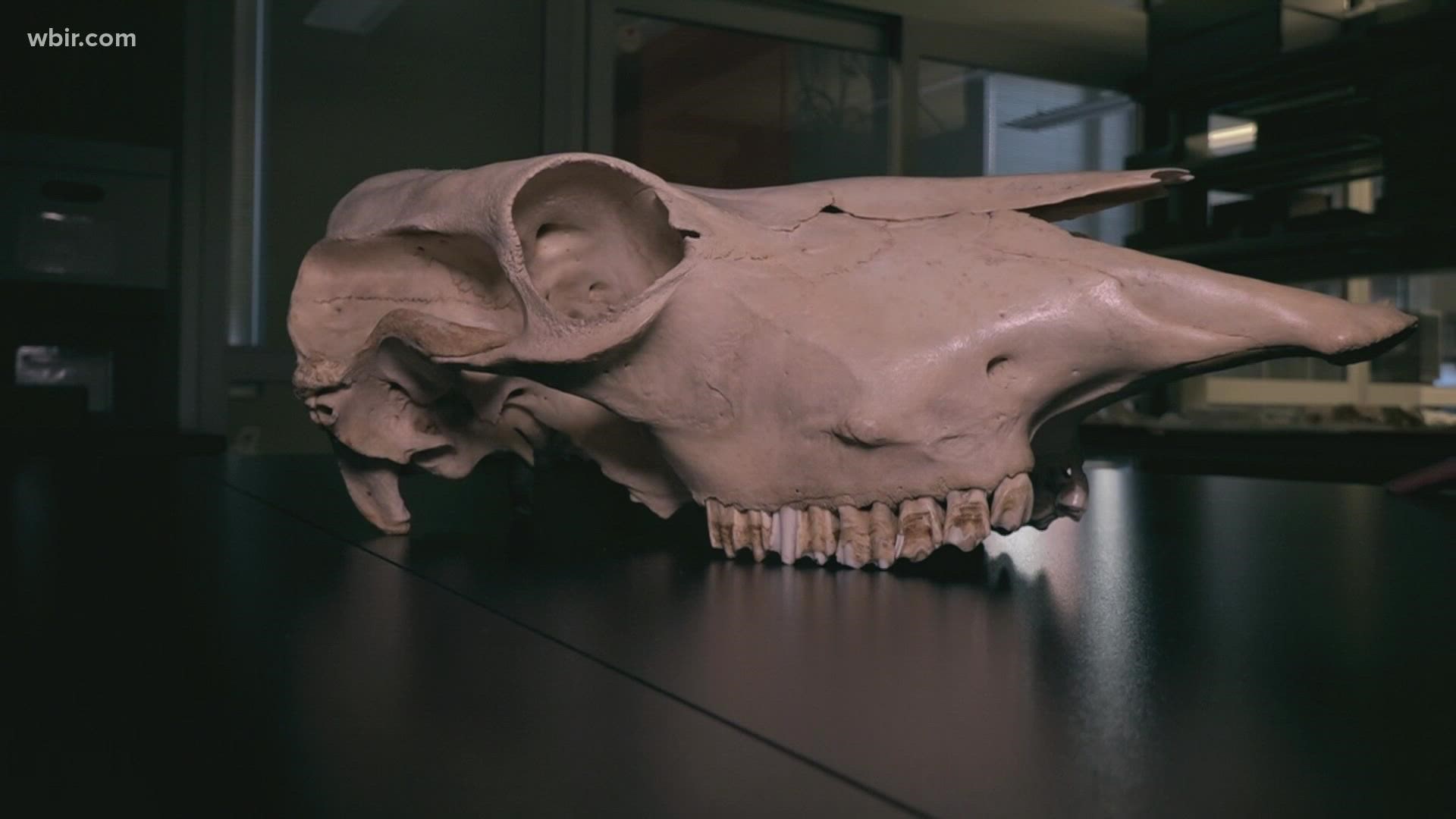KNOXVILLE, Tenn. — The University of Tennessee has a lot of skeletons in the closet, animal bones that is!
From alligators to ostriches, the Anthropology Department's Vertebrate Osteology Collection is one of the largest of its kind in the U.S.
"We have over 12,000 vertebrate specimens in our collections. So that's 12,000 skeletons of individual animals," said Dr. Anneke Janzen, an assistant professor in UT's Anthropology Department.
As curator of the collection, Janzen gave us a look at the animal bones that fill the shelves of all shapes and sizes.
"The smallest? We have a pretty good collection of bats and hummingbirds," Janzen said.
The largest is probably their bison, a good 15-pound skull.
While most of the specimens can be stored in jars and boxes, above the cabinets sits the "animals with headgear" or your antlers and horns because they take up so much space.

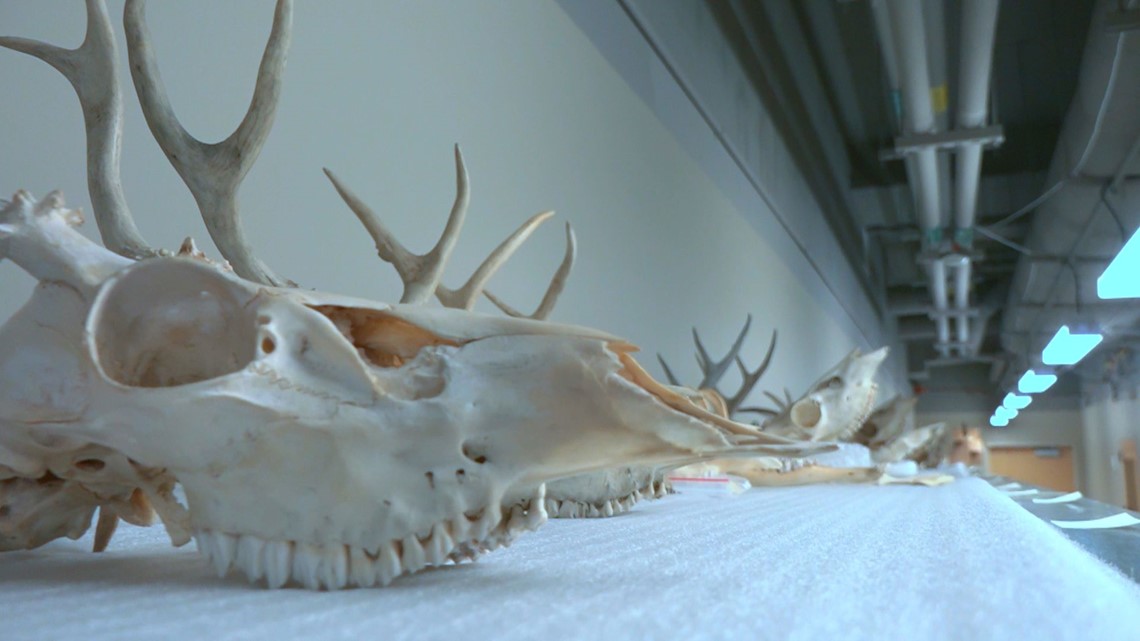
To the untrained eye, some skulls are hard to identify, like the dolphin, which has a pointed beak-like shape much as you would expect on a bird.

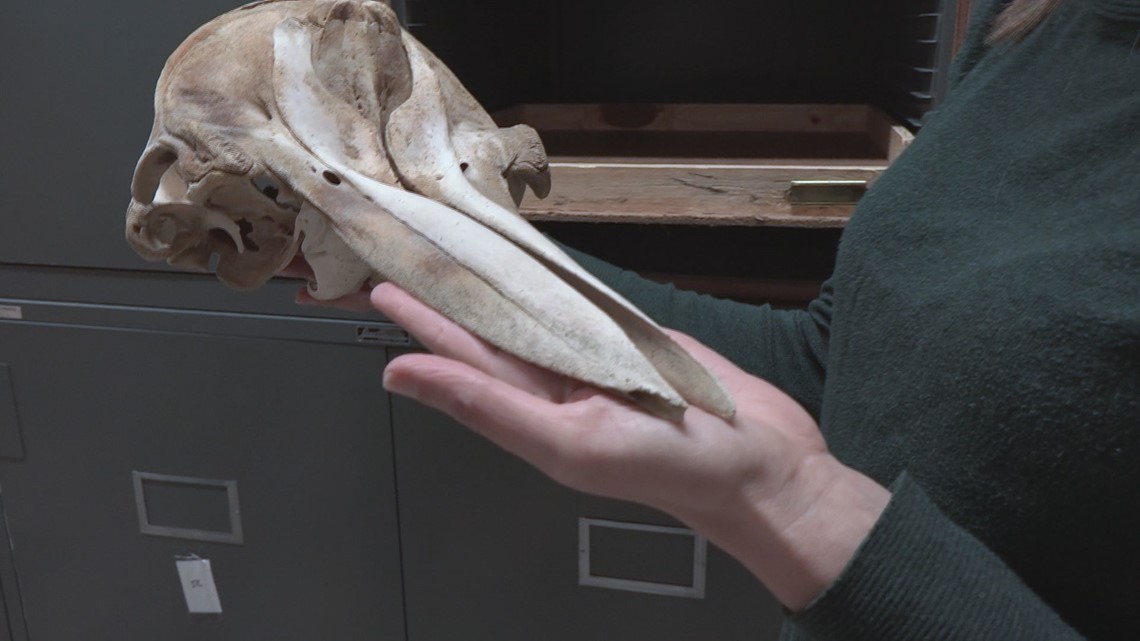
Most animal skeletons are native to the state of Tennessee and are what you'd spot in your backyard, such as birds, raccoons and shrews.
An extensive collection of fish also shows what you'd catch in the Tennessee River. Check out the teeth on that Gar!

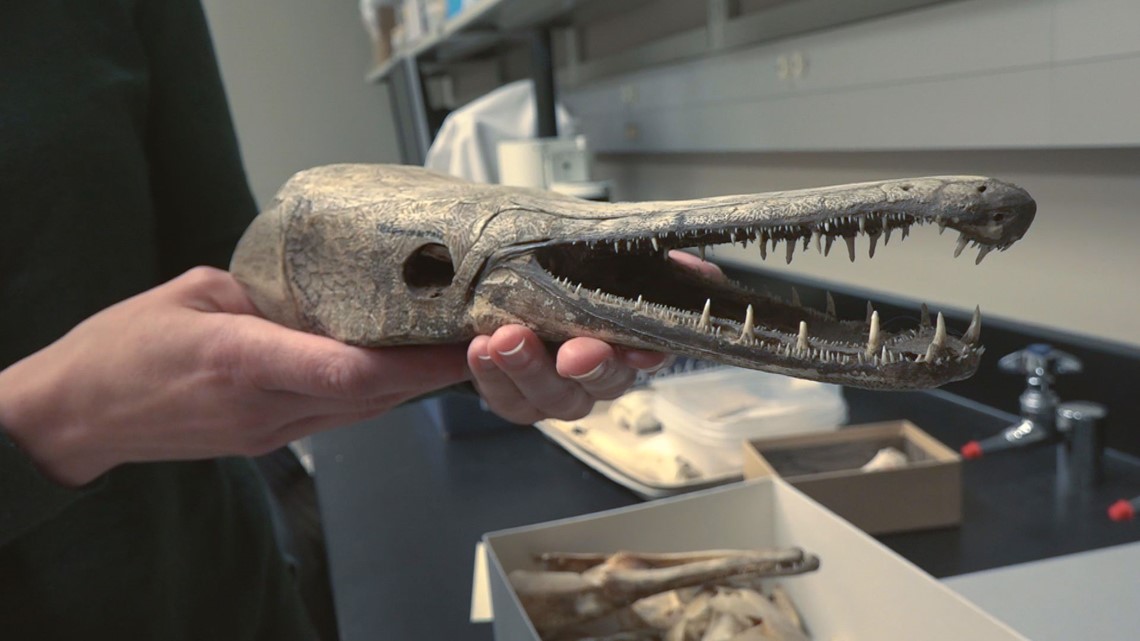
Thanks to the Knoxville Zoo, a few exotic skeletons are in the collection, like an ostrich.

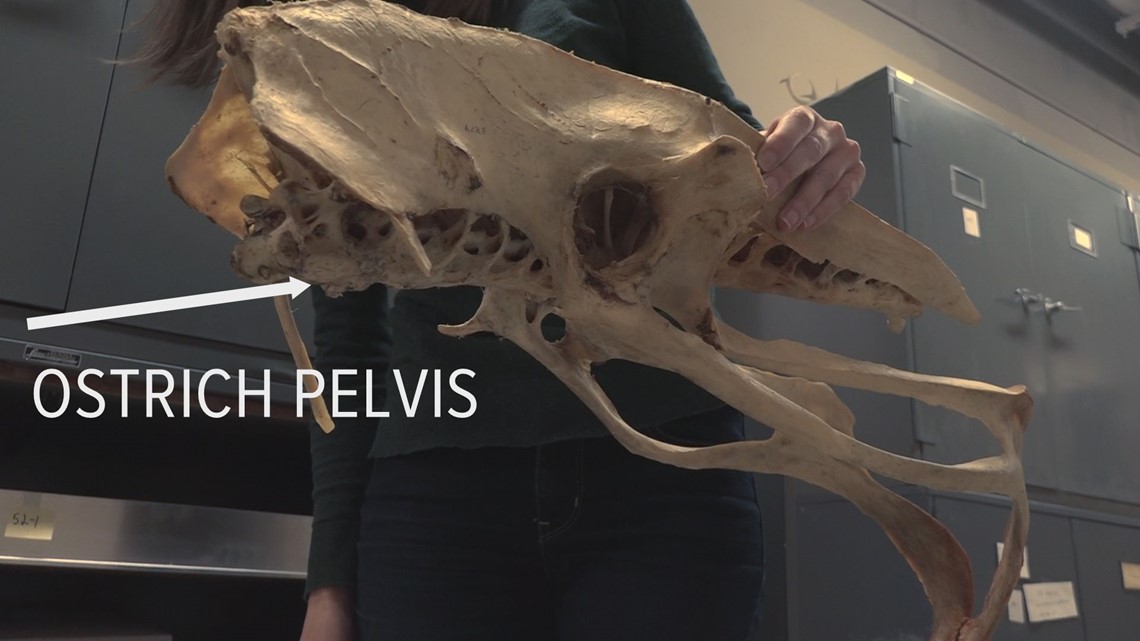
Started back in 1970 by professors Paul Parmalee and Walter Klippel, the collection has grown by the thousands over the decades. Every fragment is labeled and stored.
"Every specimen has as much information as possible about where it came from. So what county? Who was the collector? What condition was it found in?" Janzen said.
Janzen said a big part of the collection comes from the efforts of Parmalee who would go fishing and donate his catches. He also favored birds.
Today, this graveyard of knowledge is an incredible resource for students and traveling researchers.
"Beyond just being able to identify bones and identify different species based on tiny bone fragments, I think students have a much greater appreciation for, you know, the diversity of animal life out there and much greater appreciation for animals in our backyards as well," Janzen said.

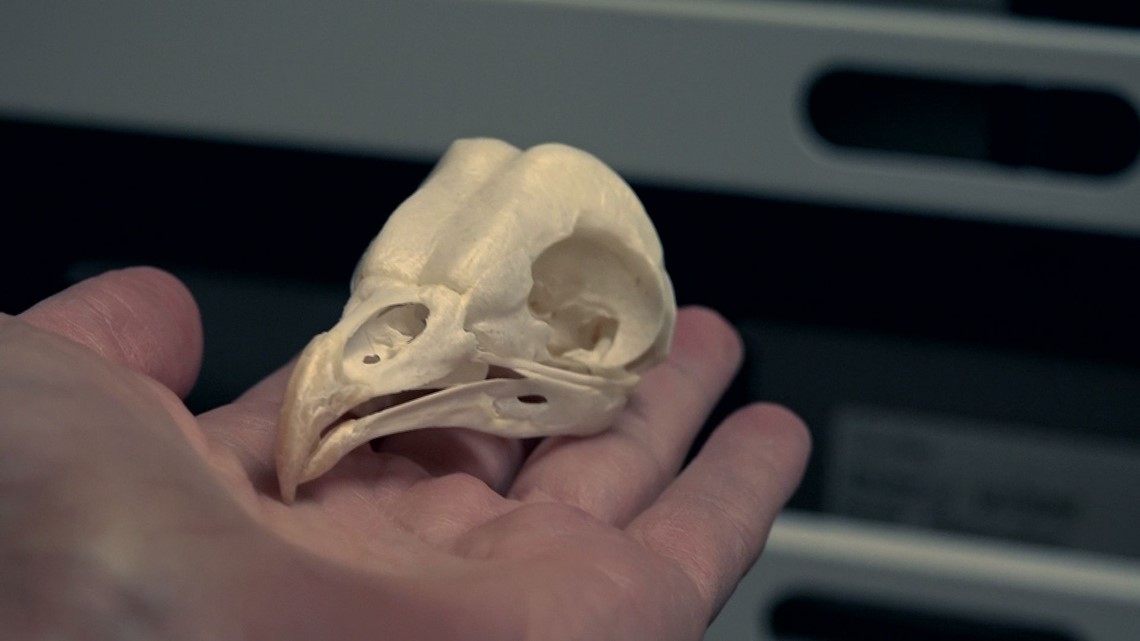
The department hopes to see the collection continue to grow. Though take note, it isn't taking any "fresh" additions at this time.
"We also have hunters who have donated specimens of deer that they've hunted. Some people have picked up roadkill for us and donated them," Janzen said.
For any retirees who have some skeletons collecting dust, the department is interested.
"We've had folks who have been doing zooarchaeology, and then they retired and they say, 'Oh, my spouse says, 'No, you can't keep these animal skeletons,'' you know, their own personal collection in the garage anymore. So they've donated that material to us, which we gladly accept," she said.
The department is always happy to answer any questions about discoveries you have made.
"We get a lot of emails from people with pictures of bones wondering what kind of animal it is," Janzen said.
The most common confusion is bear bones with human bones.
"Because they're on the whole flat foot. You know, whereas like deer and other animals are up on their tippy-toes essentially," Janzen said.
Right now, the department is expanding outreach into the community through social media. You can follow them on Facebook and Instagram.
The team also does events with the McClung Museum such as Darwin Day and Dig It Days throughout the year.

